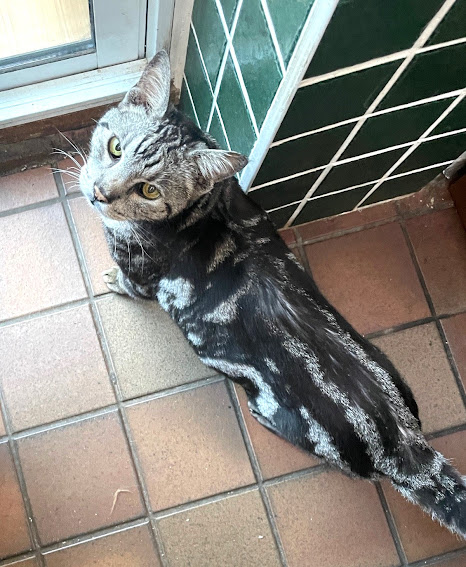Traditional pursuits in October – part 4
All images courtesy of Wikimedia Commons
The modern celebration of Hallowe’en originated in the Celtic festival of Samhain. The Celts believed that the boundary between life and death became ill-defined and blurred on this night and the spirits of the dead, the ‘ghosts’, returned to earth. To keep them at bay bonfires were lit and the people dressed up as monsters and animals to frighten away the fairies who might otherwise kidnap them.
Hallowe’en has developed into a commercial industry, in a similar fashion to Christmas and Easter. The religious elements have been overtaken by Mammon. I have heard some say that Hallowe’en is their favourite time of the year.
I have very mixed feelings about Hallowe’en. It is fun for little children to dress up and go out at night when they might otherwise be going to bed. The outfits may be appealing and are ‘available at countless outlets’. I must admit that a baby or toddler dressed as a pumpkin looks very sweet. My first difficulty comes with their expectation of receiving sweets from strangers and the expense incurred in acquiring ‘suitable’ costumes.
The youngest children are accompanied by adults and usually go only to the houses of friends at the very beginning of the evening, soon after dark has fallen. This is the most innocent group, usually dressed as fairies or winsome witches or appealing baby ghosts or dashing pirates or junior devils or chubby skeletons, all outfits ‘available at countless outlets’. They are excited and sometimes a little apprehensive. Some are overcome and become frightened and who can blame them?
A field of pumpkins
The next group consists of older children, still accompanied by adults. They go only to the houses with lighted pumpkins – a sign that there will be goodies to fill their pumpkin baskets which are ‘available at countless outlets’. Their costumes may be a little less attractive, gruesome masks being a favourite feature among the boys, though the girls may still favour pretty outfits. (Is that gender-critical?)
There is no doubt that the participating adults providing tooth-wrecking confectionery enjoy seeing many different groups of children throughout the evening. For those whose own children have grown and flown or who have never had children it can be a magical experience and I’ve seen the pleasure they gain. Less acceptable is the grab and go attitude of some of the children and the comparison of baskets and the lack of any sort of gratitude for the things they receive. However, some are very grateful and even overwhelmed.
My second difficulty comes with the ‘decoration’ of houses. Some householders go to tremendous efforts to trick out their houses and gardens with artificial spiders, webs, skeletons, severed limbs, ghosts, ghouls, witches, warlocks, devils, bats,(even though the bats are hibernating) gravestones, all ‘available at countless outlets’ and not forgetting the carved pumpkins, which are not always ‘available at countless outlets’. Some people appear at the door in grotesquery to outdo anything the children might achieve.
Once the young children have filled their buckets and gone home, perhaps longing to eat their winnings but being told they must share them with others or ration themselves to ‘one a day’ for ever and then having a tantrum, the older children emerge. Some of the young children will have been stuffing sweets into their mouths as fast as possible as they traverse the streets and will be looking rather green about the gills.
The older children are the younger secondary school children, with more sophisticated tastes and habits, more startling costumes ‘available at countless outlets’ and a greater ability and maybe desire to shock. They prowl the streets in herds, striking fear into the hearts of the unwary. They are not seeking sweets alone but the opportunity to make an impression, good or otherwise.
Following them and probably the final cohort, if you’re lucky, are the older teenagers, grotesquely or seductively clad in costumes ‘available at countless outlets’ and quite possibly carrying cans of cheap, sickly alcohol and therefore finding everything screamingly funny. They travel in tribes and may be inclined to foolish pranks, such as overturning dustbins or lighting fireworks in the street.
Some adults organise Hallowe’en parties, with ghoulish refreshments in the form of coffins, bats, witches’ fingers (!) and repulsive drinking vessels. Guests apparelled in hideous costumes ‘available at countless outlets’ and with make-up bloodthirsty sufficient to make the strongest soul blench arrive to enjoy the evening.
My overriding difficulty is concerned with the reasons for celebrating in the way we do. Why do we manufacture horror when there is so much real terror in the world? Is it a way of inuring ourselves to it? Are we desensitising ourselves?
Nonetheless, I know my grandchildren and great-grandchildren, dressed for the occasion, will be out and about on Hallowe’en, in London, Berkshire, Hampshire and Dorset. They will enjoy themselves, I’m sure, despite their grumpy older relative.
And
long-leggedy beasties
And
things that go bump in the night,
Good Lord deliver us.














.jpg)













.png)










.jpeg)

